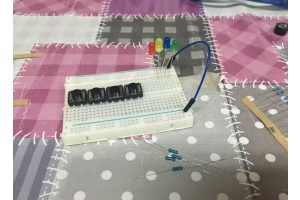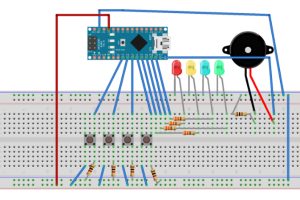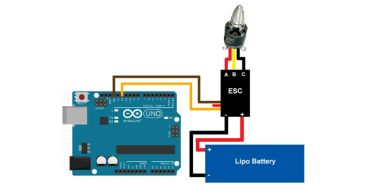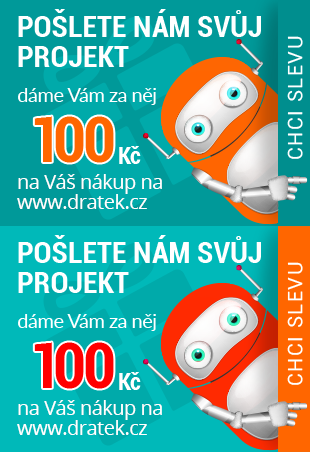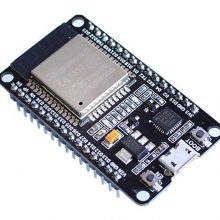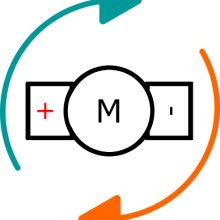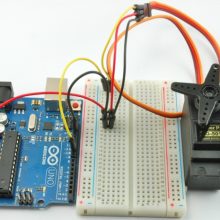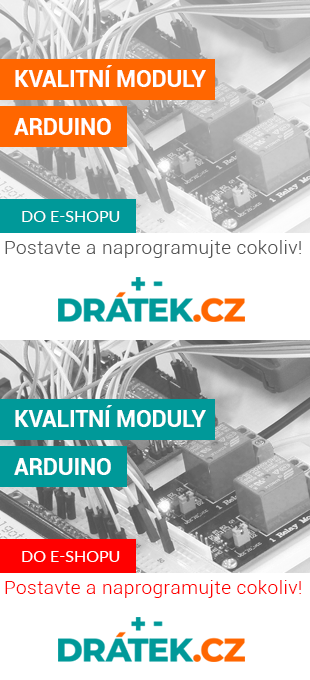
Hra „Simon říká“ realizovaná pomocí Arduina je skvělým projektem, jehož cílem je spojit zábavu s učením a rozvojem technických dovedností. Hráč se snaží zapamatovat a správně zopakovat sekvenci světelných nebo zvukových signálů, čímž si trénuje paměť, koncentraci a rychlé reakce. Arduino zde slouží jako řídicí jednotka, která ovládá LED diody, tlačítka a případně piezo reproduktor, a zároveň zajišťuje logiku celé hry. Projekt je ideální pro začátečníky i pokročilé, protože umožňuje naučit se základy elektroniky, programování v jazyce C/C++ a práci s mikrokontroléry. Navíc nabízí prostor pro kreativitu – lze přidávat nové funkce, měnit obtížnost nebo design, a tím si vytvořit vlastní unikátní verzi této klasické paměťové hry.
Schéma zapojení:
- Napájení a základní deska:
- Používá se Arduino (např. Uno nebo Nano), které řídí LED diody, tlačítka a reproduktor.
- LED diody (výstup):
- Červená LED je připojena na pin 10
- Modrá LED je připojena na pin 11
- Zelená LED je připojena na pin 9
- Žlutá LED je připojena na pin 8
- Tlačítka (vstup):
- Červené tlačítko je připojeno na pin 6
- Modré tlačítko je připojeno na pin 7
- Zelené tlačítko je připojeno na pin 5
- Žluté tlačítko je připojeno na pin 4
- Reproduktor (výstup):
- Piezo reproduktor je připojen na pin 12
- Slouží k přehrávání tónů podle barvy (např. červená = 200 Hz, modrá = 400 Hz atd.)
- Další poznámky:
- Tlačítka by měla být zapojena s pull-down rezistorem nebo využít interní pull-up rezistor Arduina.
- LED diody by měly mít sériový rezistor (např. 220 Ω) pro omezení proudu.
- Reproduktor může být piezo typ, který zvládne jednoduché tóny pomocí funkce tone().
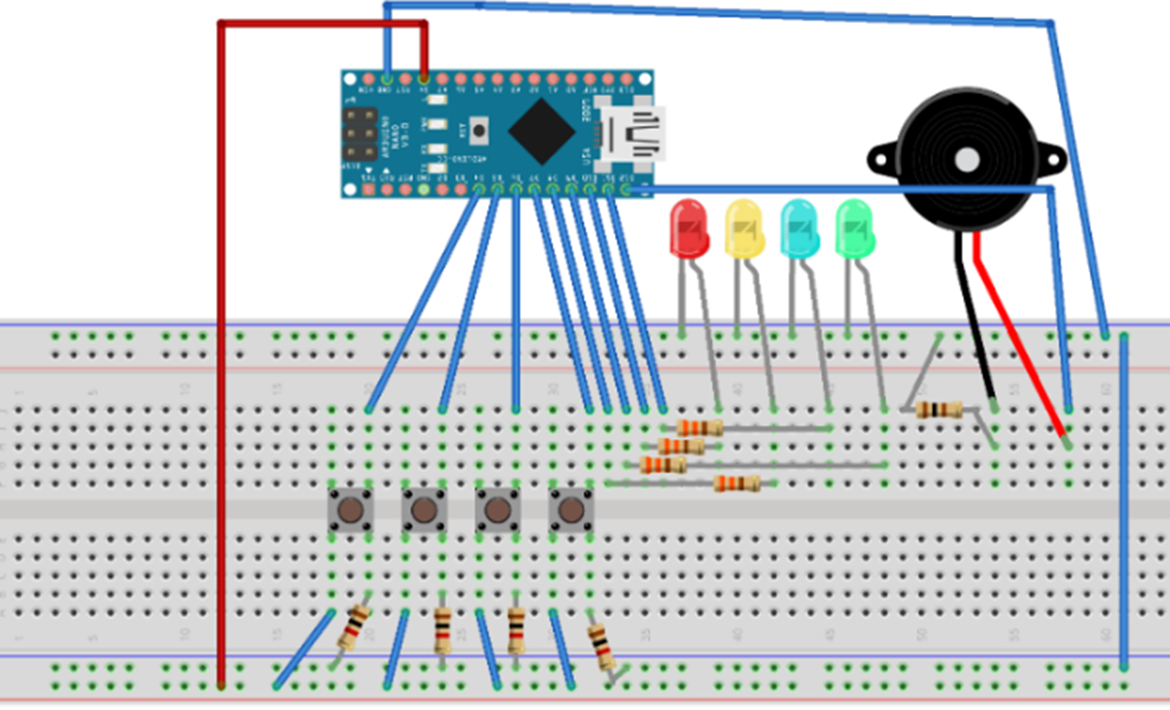
Kód pro Arduino:
Kód je napsán v C++ a používá třídy, pokud to uvidíte poprvé, nebojte se, jsou to takové kontejnery na funkce a proměnné. Pokud se chcete dozvědět více, vyhledejte výukovou lekci C++ o třídách.
class Game {
private:
int debounce(int last, int buttonPin);
void playNote(int note, int noteSpeed) const;
void flashLed(int led, int flashSpeed) const;
public:
static const int RED_PIN;
static const int BLUE_PIN;
static const int GREEN_PIN;
static const int YELLOW_PIN;
static const int MICROPHONE_PIN;
static const int RED_BUTTON_PIN;
static const int BLUE_BUTTON_PIN;
static const int GREEN_BUTTON_PIN;
static const int YELLOW_BUTTON_PIN;
static const int RED_TONE;
static const int BLUE_TONE;
static const int GREEN_TONE;
static const int YELLOW_TONE;
static const int GAMEOVER_TONE;
int gameLevel[200];
int gameSpeed;
int lastButtonValue;
int currentLevel;
int gameIsOver;
double gameDifficulty;
enum color { YELLOW, GREEN, RED, BLUE };
public:
Game();
Game(int);
void playLevel();
int userInput();
int gameOver();
int getNote(int note) const;
int pinToColorCode(int);
int colorCodeToPin(int);
int readButton(int buttonPin);
};
/* Pin settings */
static const int Game::MICROPHONE_PIN = 12;
static const int Game::BLUE_PIN = 11;
static const int Game::RED_PIN = 10;
static const int Game::GREEN_PIN = 9;
static const int Game::YELLOW_PIN = 8;
static const int Game::BLUE_BUTTON_PIN = 7;
static const int Game::RED_BUTTON_PIN = 6;
static const int Game::GREEN_BUTTON_PIN = 5;
static const int Game::YELLOW_BUTTON_PIN = 4;
/* Tone frequencies */
static const int Game::RED_TONE = 200;
static const int Game::BLUE_TONE = 400;
static const int Game::YELLOW_TONE = 600;
static const int Game::GREEN_TONE = 800;
static const int Game::GAMEOVER_TONE = 1000;
// Construct and initialize the Game object.
Game::Game(int difficulty) : gameSpeed(1000), lastButtonValue(-1), currentLevel(0), gameDifficulty(difficulty), gameIsOver(0) {
Serial.print("Constructing game object with difficulty: ");
Serial.println(difficulty);
pinMode(Game::MICROPHONE_PIN, OUTPUT);
pinMode(Game::BLUE_PIN, OUTPUT);
pinMode(Game::RED_PIN, OUTPUT);
pinMode(Game::GREEN_PIN, OUTPUT);
pinMode(Game::YELLOW_PIN, OUTPUT);
}
Game::Game() : gameSpeed(1000), lastButtonValue(-1), currentLevel(0), gameDifficulty(10), gameIsOver(0) {
Serial.println("Constructing game object");
pinMode(Game::MICROPHONE_PIN, OUTPUT);
pinMode(Game::BLUE_PIN, OUTPUT);
pinMode(Game::RED_PIN, OUTPUT);
pinMode(Game::GREEN_PIN, OUTPUT);
pinMode(Game::YELLOW_PIN, OUTPUT);
}
/*
* Makes sure the button is pressed only once.
*/
int Game::debounce(int last, int buttonPin) {
int current = digitalRead(buttonPin);
if (last != current)
{
delay(5);
current = digitalRead(buttonPin);
}
return current;
}
/*
* Plays a note.
* Receives the button number and plays the corresponding note.
*/
void Game::playNote(int note, int noteSpeed) const {
Serial.print("playNote: Playing note: ");
Serial.print(note);
Serial.print(" with speed: ");
Serial.println(noteSpeed);
note = Game::getNote(note);
tone(Game::MICROPHONE_PIN, note, noteSpeed);
}
/*
* Returns the corresponding color code based on pin.
*/
int Game::colorCodeToPin(int value) {
int ret_val = -1;
switch(value) {
case RED:
ret_val = Game::RED_PIN;
break;
case GREEN:
ret_val = Game::GREEN_PIN;
break;
case BLUE:
ret_val = Game::BLUE_PIN;
break;
case YELLOW:
ret_val = Game::YELLOW_PIN;
break;
default:
Serial.println("colorCodeToPin: Invalid value!");
delay(1000);
exit(0);
}
return ret_val;
}
/*
* Converts the button pin to a color code.
*/
int Game::pinToColorCode(int value) {
int ret_val = -1;
switch(value) {
case Game::RED_BUTTON_PIN:
ret_val = RED;
break;
case Game::GREEN_BUTTON_PIN:
ret_val = GREEN;
break;
case Game::BLUE_BUTTON_PIN:
ret_val = BLUE;
break;
case Game::YELLOW_BUTTON_PIN:
ret_val = YELLOW;
break;
default:
Serial.println("pinToColorCode: Invalid value!");
delay(1000);
exit(0);
}
return ret_val;
}
/*
* The the corresponding note based on the color code it receives.
*/
int Game::getNote(int note) const {
int return_value = -1;
switch(note) {
case YELLOW:
return_value = Game::YELLOW_TONE;
break;
case GREEN:
return_value = Game::GREEN_TONE;
break;
case RED:
return_value = Game::RED_TONE;
break;
case BLUE:
return_value = Game::BLUE_TONE;
break;
case 4:
return_value = Game::GAMEOVER_TONE;
break;
default:
Serial.println("playNote: Error! Invalid note!");
delay(1000);
exit(0);
}
return return_value;
}
/*
* Flashes a led. Receives the led code and sets it to the corresponding pin.
*/
void Game::flashLed(int led, int flashSpeed) const {
Serial.print("flashLed: Flashing LED: ");
Serial.print(led);
Serial.print(" with speed: ");
Serial.println(flashSpeed);
led = Game::colorCodeToPin(led);
digitalWrite(led, HIGH);
delay(flashSpeed);
digitalWrite(led, LOW);
}
/*
* Plays the next level.
*/
void Game::playLevel() {
Serial.print("playLevel: Playing on level: ");
Serial.println(Game::currentLevel);
Game::gameLevel[Game::currentLevel] = random(0, 4); // Create a random move every time. 0 to 4 exclusive.
++Game::currentLevel;
int nextDificulty = Game::gameDifficulty * Game::currentLevel;
if (Game::gameSpeed - nextDificulty >= 10) {
Game::gameSpeed -= nextDificulty; // decrease the speed;
}
// Play all the moves
for (int i = 0; i < Game::currentLevel; ++i) {
Game::playNote(Game::gameLevel[i], Game::gameSpeed);
Game::flashLed(Game::gameLevel[i], Game::gameSpeed);
}
}
/*
* Reads the button value and returns the following codes:
* 0 - Yellow 1 - Green 2 - Red 3 - Blue
*/
int Game::readButton(int buttonPin) {
int currentButtonValue = Game::debounce(Game::lastButtonValue, buttonPin);
int return_value = -1;
if (lastButtonValue == LOW & currentButtonValue > LOW) {
return_value = Game::pinToColorCode(buttonPin);
}
Game::lastButtonValue = currentButtonValue;
if (return_value >= 0) {
Serial.print("readButton: Received signal from button number: ");
Serial.println(return_value);
}
return return_value;
}
int Game::gameOver() {
Serial.println("game_is_over: Checking if game is over!");
if (Game::gameIsOver) {
Serial.println("game_is_over: Game is over!");
}
return Game::gameIsOver;
}
/*
* Gets the user button presses and checks them to see if they're good.
*/
int Game::userInput() {
for (int i = 0; i < Game::currentLevel; ++i) {
Serial.println("userInput: User is pressing.");
int buttonPressed = -1;
while(true) {
buttonPressed = readButton(Game::RED_BUTTON_PIN);
if (buttonPressed != -1) { break; }
buttonPressed = readButton(Game::GREEN_BUTTON_PIN);
if (buttonPressed != -1) { break; }
buttonPressed = readButton(Game::YELLOW_BUTTON_PIN);
if (buttonPressed != -1) { break; }
buttonPressed = readButton(Game::BLUE_BUTTON_PIN);
if (buttonPressed != -1) { break; }
}
if (buttonPressed != gameLevel[i]) {
Game::playNote(4, 100); // game over note, and game over note speed.
Game::flashLed(buttonPressed, 1000);
return 0;
}
Game::playNote(buttonPressed, Game::gameSpeed);
Game::flashLed(buttonPressed, Game::gameSpeed);
}
delay(500);
return 1;
}
Game g(50); // Constructs the game object.
void setup() {
Serial.begin(9600);
randomSeed(0);
}
void loop() {
if (g.gameOver()) {
delay(1000); // Wait for serial to finish printing.
/*
On Arduino exit(0) disables the interrupts
and goes in an infinite loop.
On your PC exit(0) closes the program and
tries to clean up resources.
*/
exit(0);
}
g.playLevel();
if (g.userInput() == 0) {
g.gameIsOver = 1;
}
}



